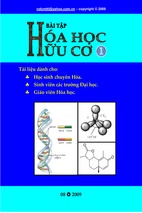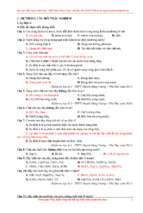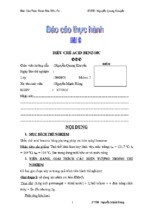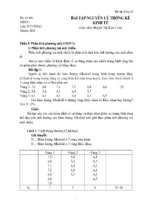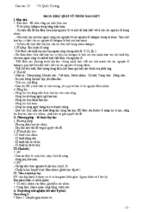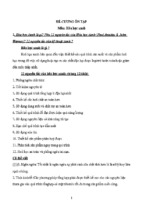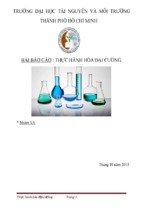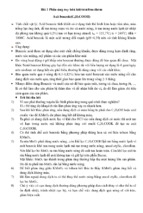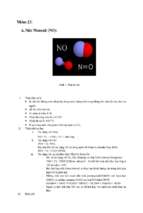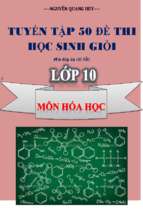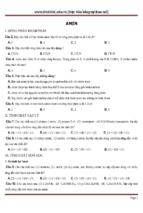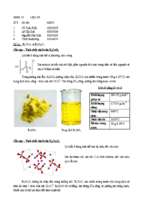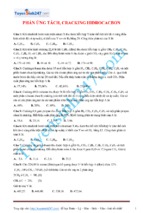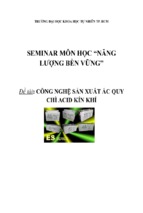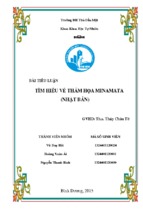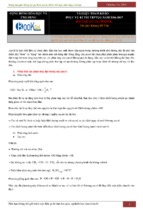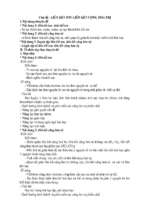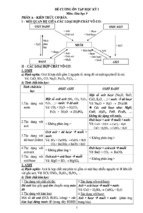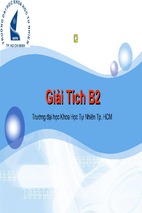Organic Chemistry As a Second Language, 3e Second Semester Topics - David R. Klein
This page intentionally left blank
ORGANIC CHEMISTRY
AS A SECOND
LANGUAGE, 3e
This page intentionally left blank
ORGANIC CHEMISTRY
AS A SECOND
LANGUAGE, 3e
Second Semester Topics
DAVID KLEIN
Johns Hopkins University
JOHN WILEY & SONS, INC.
ASSOCIATE PUBLISHER
EDITORIAL ASSISTANT
MARKETING MANAGER
SENIOR PRODUCTION EDITOR
CREATIVE DIRECTOR
SENIOR COVER DESIGNER
COVER CREDITS
Petra Recter
Lauren Stauber
Kristine Ruff
Sujin Hong; Production Management Services
provided by Prepare, Inc.
Harry Nolan
Wendy Lai
Background: © William Hopkins/iStockphoto
Test tube: Untitled X-Ray/Nick Veasey/
Getty Images, Inc.
Bicycle: Igor Shikov/Shutterstock
This book was set in 9/11 Times Roman by Prepare, Inc. and printed and bound by
Courier Westford. The cover was printed by Courier Westford.
This book is printed on acid-free paper. ⬁
Founded in 1807, John Wiley & Sons, Inc. has been a valued source of knowledge and
understanding for more than 200 years, helping people around the world meet their needs
and fulfill their aspirations. Our company is built on a foundation of principles that include
responsibility to the communities we serve and where we live and work. In 2008, we
launched a Corporate Citizenship Initiative, a global effort to address the environmental,
social, economic, and ethical challenges we face in our business. Among the issues we are
addressing are carbon impact, paper specifications and procurement, ethical conduct within
our business and among our vendors, and community and charitable support. For more
information, please visit our website: www.wiley.com/go/citizenship.
Copyright © 2012, 2006, 2005 John Wiley & Sons, Inc. All rights reserved.
No part of this publication may be reproduced, stored in a retrieval system or transmitted
in any form or by any means, electronic, mechanical, photocopying, recording, scanning or
otherwise, except as permitted under Section 107 or 108 of the 1976 United States
Copyright Act, without either the prior written permission of the Publisher or authorization
through payment of the appropriate per-copy fee to the Copyright Clearance Center, Inc.,
222 Rosewood Drive, Danvers, MA 01923, website www.copyright.com. Requests to
the Publisher for permission should be addressed to the Permissions Department,
John Wiley & Sons, Inc., 111 River Street, Hoboken, NJ 07030-5774, (201) 748-6011,
fax (201) 748-6008, website www.wiley.com/go/permissions.
Evaluation copies are provided to qualified academics and professionals for review purposes
only, for use in their courses during the next academic year. These copies are licensed and
may not be sold or transferred to a third party. Upon completion of the review period, please
return the evaluation copy to Wiley. Return instructions and a free of charge return mailing
label are available at www.wiley.com/go/returnlabel. If you have chosen to adopt this
textbook for use in your course, please accept this book as your complimentary desk copy.
Outside of the United States, please contact your local sales representative.
ISBN 978-1-118-14434-3
Printed in the United States of America
10 9 8 7 6 5 4 3 2 1
CONTENTS
CHAPTER 1
1.1
1.2
1.3
1.4
1.5
1.6
IR SPECTROSCOPY
Vibrational Excitation 2
IR Spectra 3
Wavenumber 4
Signal Intensity 9
Signal Shape 11
Analyzing an IR Spectrum
CHAPTER 2
1
19
NMR SPECTROSCOPY
26
2.1 Chemical Equivalence 26
2.2 Chemical Shift (Benchmark Values) 30
2.3 Integration 35
2.4 Multiplicity 39
2.5 Pattern Recognition 41
2.6 Complex Splitting 43
2.7 No Splitting 44
2.8 Hydrogen Deficiency Index (Degrees of Unsaturation)
2.9 Analyzing a Proton NMR Spectrum 49
2.10 13C NMR Spectroscopy 53
CHAPTER 3
3.1
3.2
3.3
3.4
3.5
3.6
3.7
3.8
3.9
46
ELECTROPHILIC AROMATIC SUBSTITUTION
56
Halogenation and the Role of Lewis Acids 57
Nitration 61
Friedel-Crafts Alkylation and Acylation 64
Sulfonation 72
Activation and Deactivation 76
Directing Effects 78
Identifying Activators and Deactivators 88
Predicting and Exploiting Steric Effects 98
Synthesis Strategies 106
v
vi
CONTENTS
CHAPTER 4
4.1
4.2
4.3
4.4
Criteria for Nucleophilic Aromatic Substitution
SNAr Mechanism 115
Elimination-Addition 121
Mechanism Strategies 126
CHAPTER 5
5.1
5.2
5.3
5.4
5.5
5.6
5.7
5.8
5.9
KETONES AND ALDEHYDES
112
129
Preparation of Ketones and Aldehydes 129
Stability and Reactivity of C¨O Bonds 133
H-Nucleophiles 135
O-Nucleophiles 140
S-Nucleophiles 153
N-Nucleophiles 155
C-Nucleophiles 165
Some Important Exceptions to the Rule 175
How to Approach Synthesis Problems 180
CHAPTER 6
6.1
6.2
6.3
6.4
6.5
6.6
6.7
NUCLEOPHILIC AROMATIC SUBSTITUTION
CARBOXYLIC ACID DERIVATIVES
Reactivity of Carboxylic Acid Derivatives
General Rules 188
Acid Halides 192
Acid Anhydrides 201
Esters 203
Amides and Nitriles 213
Synthesis Problems 222
CHAPTER 7
ENOLS AND ENOLATES
7.1 Alpha Protons 231
7.2 Keto-Enol Tautomerism 233
7.3 Reactions Involving Enols 238
7.4 Making Enolates 241
7.5 Haloform Reaction 244
7.6 Alkylation of Enolates 247
7.7 Aldol Reactions 252
7.8 Claisen Condensation 259
7.9 Decarboxylation 266
7.10 Michael Reactions 273
231
187
187
112
CONTENTS
CHAPTER 8
8.1
8.2
8.3
8.4
8.5
8.6
AMINES
281
Nucleophilicity and Basicity of Amines 281
Preparation of Amines through SN2 Reactions 283
Preparation of Amines through Reductive Amination
Acylation of Amines 291
Reactions of Amines with Nitrous Acid 295
Aromatic Diazonium Salts 298
Answer Key
Index 345
301
287
vii
This page intentionally left blank
CHAPTER
1
IR SPECTROSCOPY
Did you ever wonder how chemists are able to determine whether or not a reaction has produced
the desired products? In your textbook, you will learn about many, many reactions. And an obvious question should be: “how do chemists know that those are the products of the reactions?
Until about 50 years ago, it was actually VERY difficult to determine the structures of the products
of a reaction. In fact, chemists would often spend many months, or even years to elucidate the structure of a single compound. But things got a lot simpler with the advent of spectroscopy. These days,
the structure of a compound can be determined in minutes. Spectroscopy is, without a doubt, one of
the most important tools available for determining the structure of a compound. Many Nobel prizes
have been awarded over the last few decades to chemists who pioneered applications of spectroscopy.
The basic idea behind all forms of spectroscopy is that electromagnetic radiation (light) can interact with matter in predictable ways. Consider the following simple analogy: imagine that you
have 10 friends, and you know what kind of bakery items they each like to eat every morning. John
always has a brownie, Peter always has a French roll, Mary always has a blueberry muffin, etc.
Now imagine that you walk into the bakery just after it opens, and you are told that some of your
friends have already visited the bakery. By looking at what is missing from the bakery, you could
figure out which of your friends had just been there. If you see that there is a brownie missing, then
you deduce that John was in the bakery before you.
This simple analogy breaks down when you really get into the details of spectroscopy, but the
basic idea is a good starting point. When electromagnetic radiation interacts with matter, certain
frequencies are absorbed while other frequencies are not. By analyzing which frequencies were absorbed (which frequencies are missing once the light passes through a solution containing the unknown compound), we can glean useful information about the structure of the compound.
You may recall from your high school science classes that the range of all possible frequencies
(of electromagnetic radiation) is known as the electromagnetic spectrum, which is divided into several regions (including X-rays, UV light, visible light, infrared radiation, microwaves, and radio
waves). Different regions of the electromagnetic spectrum are used to probe different aspects of
molecular structure, as seen in the table below:
Type of
Spectroscopy
Region of
Electromagnetic Spectrum
Information Obtained
NMR Spectroscopy
Radio Waves
The specific arrangement of all
carbon and hydrogen atoms in
the compound
IR Spectroscopy
Infrared
The functional groups present in
the compound
UV-Vis Spectroscopy
Visible and Ultraviolet
Any conjugated � system present
in the compound
1
2
CHAPTER 1
IR SPECTROSCOPY
We will not cover UV-Vis spectroscopy in this book. Your textbook will have a short section
on that form of spectroscopy. In this chapter, we will focus on the information that can be obtained
with IR spectroscopy. Chapter 2 will cover NMR spectroscopy.
1.1
VIBRATIONAL EXCITATION
Molecules can store energy in a variety of ways. They rotate in space, their bonds vibrate like
springs, their electrons can occupy a number of possible molecular orbitals, etc. According to the
principles of quantum mechanics, each of these forms of energy is quantized. For example, a bond
in a molecule can only vibrate at specific energy levels:
High-energy
vibrational state
Energy
E
Low-energy
vibrational state
The horizontal lines in this diagram represent allowed vibrational energy levels for a particular bond.
The bond is restricted to these energy levels, and cannot vibrate with an energy that is in between the
allowed levels. The difference in energy (�E) between allowed energy levels is determined by the nature
of the bond. If a photon of light possesses exactly this amount of energy, the bond (which was already
vibrating) can absorb the photon to promote a vibrational excitation. That is, the bond will now vibrate
more energetically (a larger amplitude). The energy of the photon is temporarily stored as vibrational
energy, until that energy is released back into the environment, usually in the form of heat.
Bonds can store vibrational energy in a number of ways. They can stretch, very much the way
a spring stretches, or they can bend in a number of ways. Your textbook will likely have images
that illustrate these different kinds of vibrational excitation. In this chapter, we will devote most of
our attention to stretching vibrations (as opposed to bending vibrations) because stretching vibrations generally provide the most useful information.
For each and every bond in a molecule, the energy gap between vibrational states is very much
dependent on the nature of the bond. For example, the energy gap for a C¶H bond is much larger
than the energy gap for a C¶O bond:
C-O bond
C-H bond
Energy
E
Large
gap
E Small
gap
1.2 IR SPECTRA
3
Both bonds will absorb IR radiation, but the C¶H bond will absorb a higher energy photon. A similar analysis can be performed for other types of bonds as well, and we find that each type of bond
will absorb a characteristic frequency, allowing us to determine which types of bonds are present
in a compound. For example, a compound containing an O¶H bond will absorb a frequency of IR
radiation characteristic of O¶H bonds. In this way, IR spectroscopy can be used to identify the
presence of functional groups in a compound. It is important to realize that IR spectroscopy does
NOT reveal the entire structure of a compound. It can indicate that an unknown compound is an
alcohol, but to determine the entire structure of the compound, we will need NMR spectroscopy
(covered in the next chapter). For now, we are simply focusing on identifying which functional
groups are present in an unknown compound. To get this information, we simply irradiate the compound with all frequencies of IR radiation, and then detect which frequencies were absorbed. This
can be achieved with an IR spectrometer, which measures absorption as a function of frequency.
The resulting plot is called an IR absorption spectrum (or IR spectrum, for short).
1.2
IR SPECTRA
An example of an IR spectrum is shown below:
% Transmittance
100 %
80 %
60 %
40 %
20 %
0%
4000
3500
3000
2500
2000
1500
1000
400
Wavenumber (cm-1)
Notice that all signals point down in an IR spectrum. The location of each signal on the spectrum
⬃). The wavenumber is simis reported in terms of a frequency-related unit, called wavenumber (�
ply the frequency of light (�) divided by a constant (the speed of light, c):
n
'
n =
c
The units of wavenumber are inverse centimeters (cm�1), and the values range from 400 cm�1 to
4000 cm�1. Don’t confuse the terms wavenumber and wavelength. Wavenumber is proportional to
frequency, and therefore, a larger wavenumber represents higher energy. Signals that appear on the
left side of the spectrum correspond with higher energy radiation, while signals on the right side of
the spectrum correspond with lower energy radiation.
4
CHAPTER 1
IR SPECTROSCOPY
Every signal in an IR spectrum has the following three characteristics:
1. the wavenumber at which the signal appears
2. the intensity of the signal (strong vs. weak)
3. the shape of the signal (broad vs. narrow)
We will now explore each of these three characteristics, starting with wavenumber.
1.3
WAVENUMBER
For any bond, the wavenumber of absorption associated with bond stretching is dependent on two
factors:
1) Bond strength – Stronger bonds will undergo vibrational excitation at higher frequencies,
thereby corresponding to a higher wavenumber of absorption. For example, compare the bonds
below. The C˜N bond is the strongest of the three bonds and therefore appears at the highest wavenumber:
C
N
C
~ 2200 cm-1
N
C
~ 1600 cm-1
N
~ 1100 cm-1
2) Atomic mass – Smaller atoms give bonds that undergo vibrational excitation at higher
frequencies, thereby corresponding to a higher wavenumber of absorption. For example,
compare the bonds below. The C¶H bond involves the smallest atom (H) and therefore
appears at the highest wavenumber.
C
H
~ 3000 cm-1
C
D
C
~ 2200 cm-1
O
~ 1100 cm-1
C
Cl
~ 700 cm-1
Using the two trends shown above, we see that different types of bonds will appear in different regions of an IR spectrum:
Triple
Bonds
Bonds to H
X
4000
C
C
C
N
H
2700
Double
Bonds
Single Bonds
C
C
C
C
C
N
C
N
C
O
C
O
2300 2100 1850
1600
400
W avenumber ( cm-1)
Single bonds appear on the right side of the spectrum, because single bonds are generally the weakest bonds. Double bonds appear at higher wavenumber (1600–1850 cm�1) because they are stronger
than single bonds, while triple bonds appear at even higher wavenumber (2100–2300 cm�1) because they are even stronger than double bonds. And finally, the left side of the spectrum contains
signals produced by X¶H bonds (such as C¶H, O¶H, or N¶H), all of which stretch at a high
wavenumber because hydrogen has the smallest mass.
5
1.3 WAVENUMBER
IR spectra can be divided into two main regions, called the diagnostic region and the fingerprint region:
DIAGNOSTIC REGION
Bonds to H
4000
3500
3000
Tri ple
Bonds
2500
FINGERPRINT REGION
Double
Bonds
2000
Single Bonds
1500
1000
400
W avenumber ( cm-1)
The diagnostic region generally has fewer peaks and provides the most information. This region contains all signals that arise from the stretching of double bonds, triple bonds, and X¶H bonds. The
fingerprint region contains mostly bending vibrations, as well as stretching vibrations of most single
bonds. This region generally contains many signals, and is more difficult to analyze. What appears
like a C¶C stretch might in fact be another bond that is bending. This region is called the fingerprint
region because each compound has a unique pattern of signals in this region, much the way each person has a unique fingerprint. For example, IR spectra of ethanol and propanol will look extremely
similar in their diagnostic regions, but their fingerprint regions will look different. For the remainder
of this chapter, we will focus exclusively on the signals that appear in the diagnostic region, and we
will ignore signals in the fingerprint region. You should check your lecture notes and textbook to see
if you are responsible for any characteristic signals that appear in the fingerprint region.
PROBLEM 1.1 For the following compound, rank the highlighted bonds in order of increasing wavenumber.
Cl
H
O
Now let’s continue exploring factors that affect the strength of a bond (which therefore affects
the wavenumber of absorption). We have seen that bonds to hydrogen (such as C¶H bonds)
appear on the left side of an IR spectrum (high wavenumber). We will now compare various kinds
of C¶H bonds. The wavenumber of absorption for a C¶H bond is very much dependent on the
hybridization state of the carbon atom. Compare the following three C¶H bonds:
sp 3
sp 2
sp
C
C
C
H
~ 2900 cm-1
H
~ 3100 cm-1
H
~ 3300 cm-1
6
CHAPTER 1
IR SPECTROSCOPY
Of the three bonds shown, the Csp—H bond produces the highest energy signal (~3300 cm�1), while
a Csp3—H bond produces the lowest energy signal (~2900 cm�1). To understand this trend, we must
revisit the shapes of the hybridized atomic orbitals:
hybridized atomic orbitals
p
sp 3
sp 2
sp
s
0%
s character
25%
s character
33%
s character
50%
s character
100%
s character
As illustrated, sp orbitals have more s character than the other hybridized atomic orbitals, and therefore, sp orbitals more closely resemble s orbitals. Compare the shapes of the hybridized atomic orbitals,
and note that the electron density of an sp orbital is closest to the nucleus (much like an s orbital). As
a result, a Csp—H bond will be shorter than other C¶H bonds. Since it has the shortest bond length,
it will therefore be the strongest bond. In contrast, the Csp3—H bond has the longest bond length, and
is therefore the weakest bond. Compare the spectra of an alkane, an alkene, and an alkyne:
% Transmittance
C
3200 3000
C
H
C
H
2800
W avenumber ( cm-1)
A l kyne
% Transmittance
A l kene
% Transmittance
A l kane
3200 3000
C
H
H
2800
W avenumber ( cm-1)
C
3200 3000
H
2800
W avenumber ( cm-1)
In each case, we draw a line at 3000 cm�1. All three spectra have signals to the right of the line,
resulting from Csp3—H bonds. The key is to look for any signals to the left of the line. An alkane
does not have a signal to the left of 3000 cm�1. An alkene has a signal at 3100 cm�1, and an alkyne
has a signal at 3300 cm�1. But be careful—the absence of a signal to the left of 3000 cm�1 does
1.3 WAVENUMBER
7
not necessarily indicate the absence of a double bond or triple bond in the compound. Tetrasubstituted double bonds do not possess any Csp2—H bonds, and internal triple bonds also do not possess any Csp—H bonds.
R
R
R
R
R
no signal at 3100 cm-1
no Csp 2
R
no signal at 3300 cm-1
no Csp
H
H
PROBLEMS For each of the following compounds, determine whether or not you would expect its IR spectrum to exhibit a signal to the left of 3000 cm�1
1.2
1.3
1.4
1.5
Now let’s explore the effects of resonance on bond strength. As an illustration, compare the carbonyl groups (C¨O bonds) in the following two compounds:
A ketone
A conjugated ketone
O
O
1720 cm-1
1680 cm-1
The second compound is called an unsaturated, conjugated ketone. It is unsaturated because of
the presence of a C¨C bond, and it is conjugated because the � bonds are separated from each
other by exactly one single bond. Your textbook will explore conjugated � systems in more detail. For now, we will just analyze the effect of conjugation on the IR absorption of the carbonyl
group. As shown, the carbonyl group of an unsaturated, conjugated ketone produces a signal at
lower wavenumber (1680 cm�1) than the carbonyl group of a saturated ketone (1720 cm�1). In
order to understand why, we must draw resonance structures for each compound. Let’s begin with
the ketone.
O
O
Ketones have two resonance structures. The carbonyl group is drawn as a double bond in the first
resonance structure, and it is drawn as a single bond in the second resonance structure. This means
8
CHAPTER 1
IR SPECTROSCOPY
that the carbonyl group has some double-bond character and some single-bond character. In order
to determine the nature of this bond, we must consider the contribution from each resonance structure. In other words, does the carbonyl group have more double-bond character or more single-bond
character? The second resonance structure exhibits charge separation, as well as a carbon atom (C�)
that has less than an octet of electrons. Both of these reasons explain why the second resonance
structure contributes only slightly to the overall character of the carbonyl group. Therefore, the carbonyl group of a ketone has mostly double-bond character.
Now consider the resonance structures for a conjugated, unsaturated ketone.
O
O
O
one additional
resonance structure
Conjugated, unsaturated ketones have three resonance structures rather than two. In the third resonance structure, the carbonyl group is drawn as a single bond. Once again, this resonance structure exhibits charge separation as well as a carbon atom (C�) with less than an octet of electrons.
As a result, this resonance structure also contributes only slightly to the overall character of the
compound. Nevertheless, this third resonance structure does contribute some character, giving this
carbonyl group slightly more single-bond character than the carbonyl group of a saturated ketone.
With more single-bond character, it is a slightly weaker bond, and therefore produces a signal at
a lower wavenumber (1680 cm�1 rather than 1720 cm�1).
Esters exhibit a similar trend. An ester typically produces a signal at around 1740 cm�1, but
conjugated, unsaturated esters produce lower energy signals, usually around 1710 cm�1. Once again,
the carbonyl group of a conjugated, unsaturated ester is a weaker bond, due to resonance.
An ester
A conjugated, unsaturated ester
O
O
OR
OR
1740 cm-1
1710 cm-1
PROBLEM 1.6 The following compound has three carbonyl groups. Rank them in order of increasing wavenumber in an IR spectrum:
O
O
O
O
1.4 SIGNAL INTENSITY
1.4
9
SIGNAL INTENSITY
In an IR spectrum, some signals will be very strong in comparison with other signals on the
same spectrum:
100 %
% Transmittance
80 %
60 %
Weak Signal
40 %
20 %
Strong Signal
0%
Wavenumber (cm -1)
That is, some bonds absorb IR radiation very efficiently, while other bonds are less efficient at
absorbing IR radiation. The efficiency of a bond at absorbing IR radiation depends on the
strength of the dipole moment for that bond. For example, compare the following two highlighted bonds:
O
Each of these bonds has a measurable dipole moment, but they differ significantly in strength.
Let’s first analyze the carbonyl group (C¨O bond). Due to resonance and induction, the carbon
atom bears a large partial positive charge, and the oxygen atom bears a large partial negative
charge. The carbonyl group therefore has a large dipole moment. Now let’s analyze the C¨C
bond. One vinylic position is connected to electron-donating alkyl groups, while the other
vinylic position is connected to hydrogen atoms. As a result, the vinylic position bearing two
alkyl groups is slightly more electron-rich than the other vinylic position, producing a small
dipole moment.
10
CHAPTER 1
IR SPECTROSCOPY
Since the carbonyl group has a larger dipole moment, the carbonyl group is more efficient at
absorbing IR radiation, producing a stronger signal:
100 %
% Transmittance
80 %
60 %
40 %
C
20 %
C
O
C
0%
1800
1700
1600
Wavenumber (cm -1)
Carbonyl groups often produce the strongest signals in an IR spectrum, while C¨C bonds often
produce fairly weak signals. In fact, some alkenes do not even produce any signal at all. For example, consider the IR spectrum of 2,3-dimethyl-2-butene:
100 %
No signal
% Transmittance
80 %
60 %
H3C
CH3
H3C
CH3
40 %
20 %
0%
4000
3500
3000
2500
2000
1500
1000
400
Wavenumber (cm -1)
This alkene is symmetrical. That is, both vinylic positions are electronically identical, and the bond
has no dipole moment at all. As such, this C¨C bond is completely inefficient at absorbing IR radiation, and no signal is observed. The same is true for symmetrical C˜C bonds.
There is one other factor that can contribute significantly to the intensity of signals in an IR
spectrum. Consider the group of signals appearing just below 3000 cm�1 in the previous spectrum.
These signals are associated with the stretching of the C—H bonds in the compound. The intensity
- Xem thêm -

